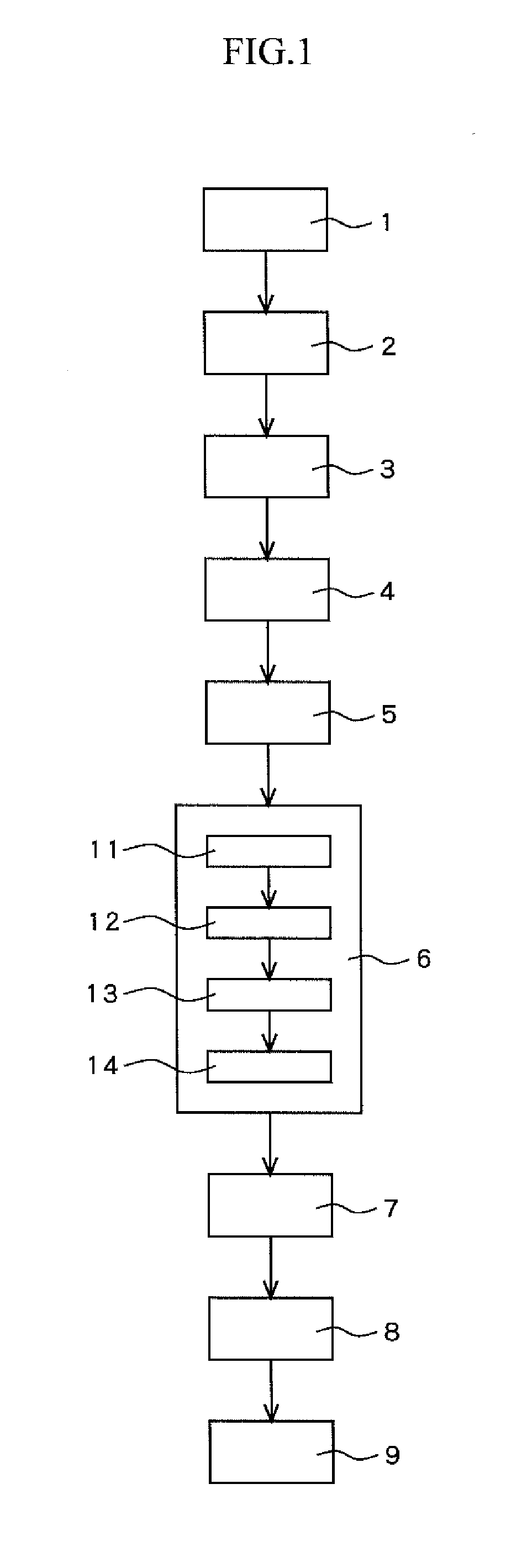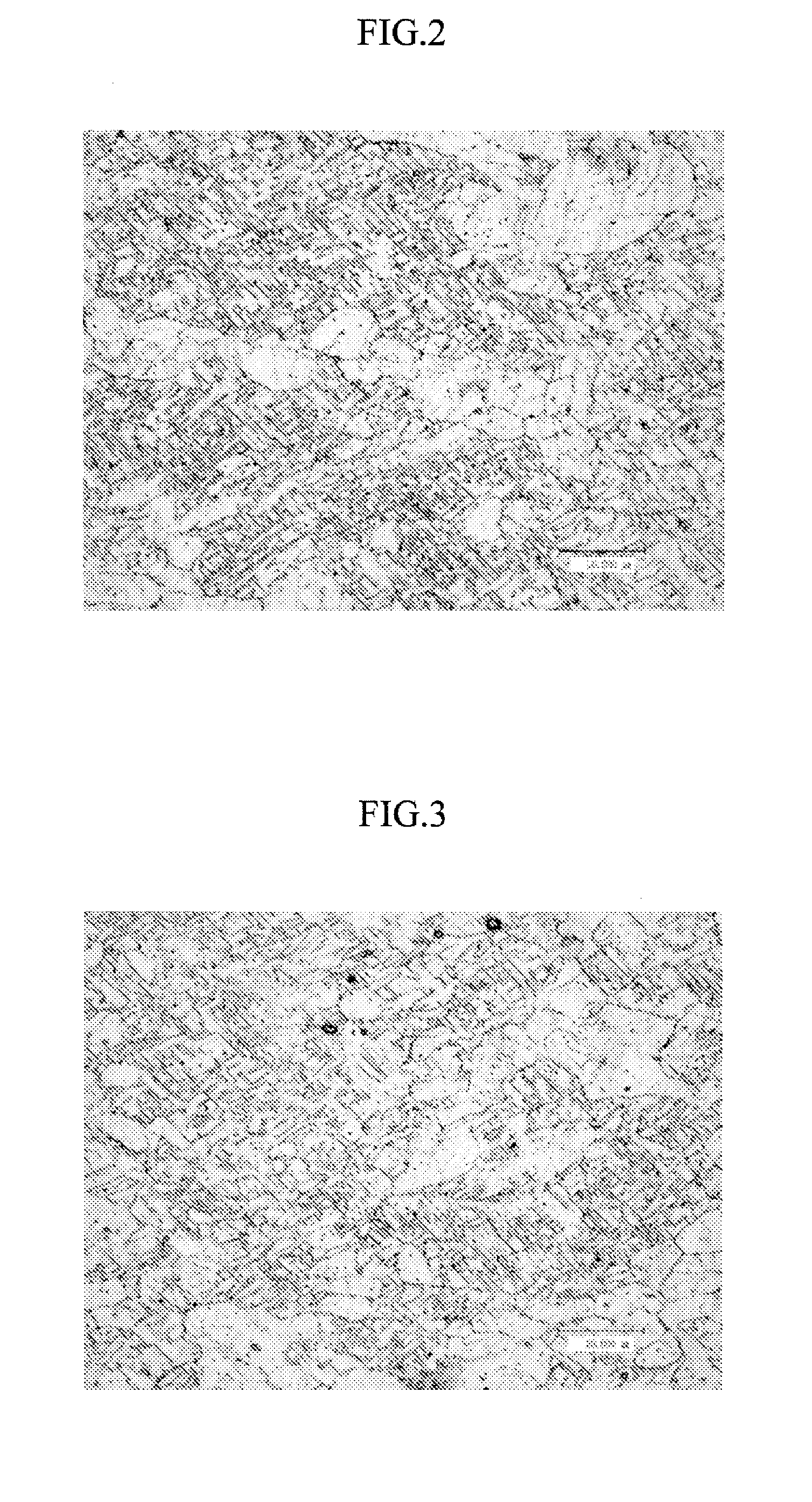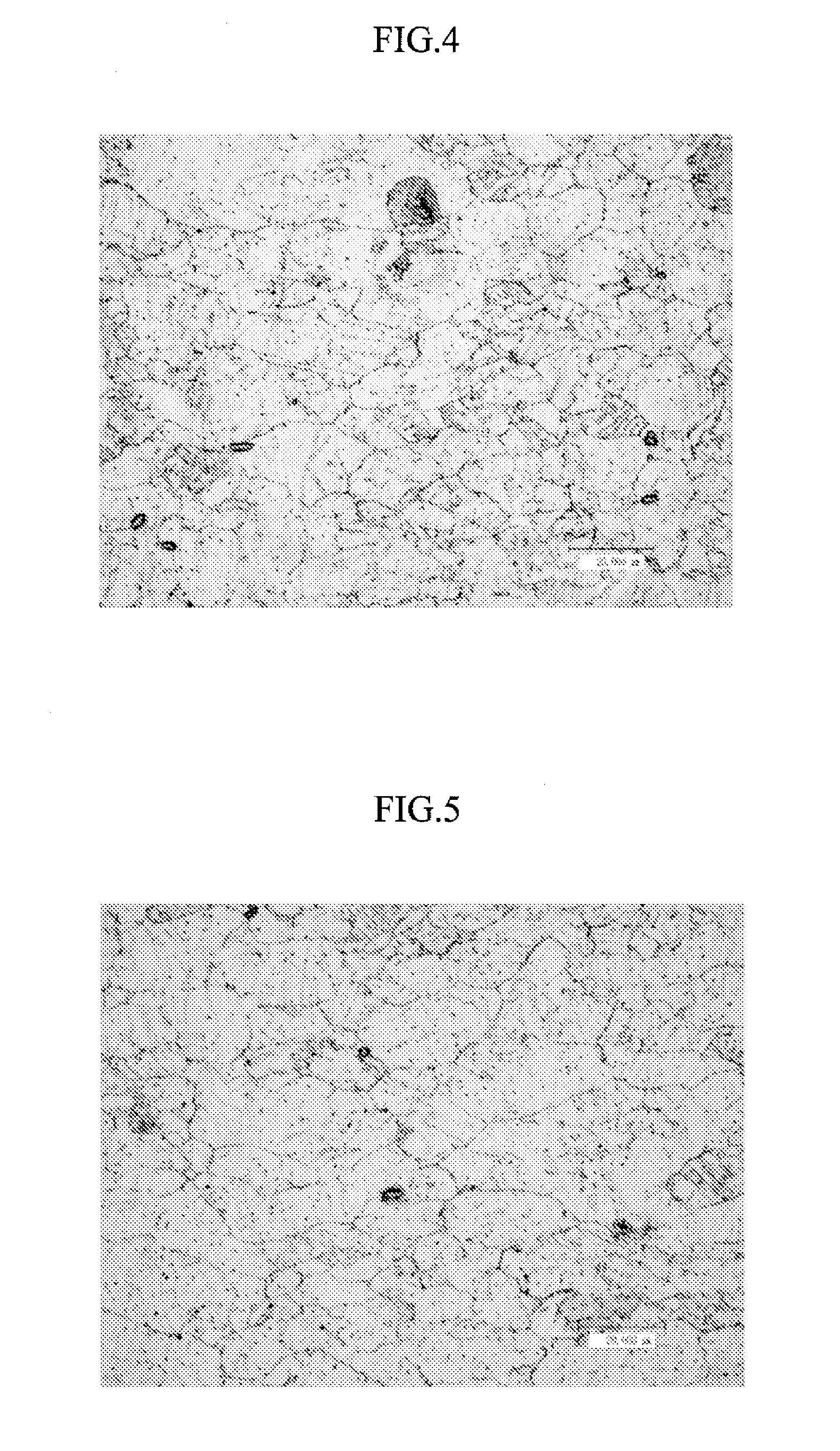Manufacturing method of copper alloy sheet
a manufacturing method and alloy sheet technology, applied in the direction of conductive materials, metal/alloy conductors, conductors, etc., can solve the problems of difficult to further improve strength, low work hardening ratio, deterioration of bending workability, etc., to achieve excellent bending workability, high conductivity, and high strength
- Summary
- Abstract
- Description
- Claims
- Application Information
AI Technical Summary
Benefits of technology
Problems solved by technology
Method used
Image
Examples
Embodiment Construction
[0038]A copper alloy sheet of the present invention contains 1.0 to 3.5 mass % Ni, 0.5 to 2.0 mass % Co, and 0.3 to 1.5 mass % Si, and its Co / Ni mass ratio is 0.15 to 1.5, its (Ni+Co) / Si mass ratio is 4 to 7, and the balance is composed of Cu and an unavoidable impurity. Further, in observation results of a crystal grain boundary property and crystal orientation by EBSP measurement, a density of twin boundaries (13 coincidence site lattice boundaries) among all crystal grain boundaries is 40% or more and an area ratio of crystal grains with Cube orientation is 20% or more, on a rolled surface of the copper alloy sheet.
[0039]This copper alloy sheet further contains at least one kind or more of Fe, Cr, Mg, Mn, Ti, V, Zr Sn, Zn, Al, B, P, Ag, Be and misch metal totally in a 2 mass % or less range, when necessary.
[0040]Hereinafter, the copper alloy sheet and a manufacturing method of the same will be described in detail.
[0041]First, the alloy composition will be described. A copper allo...
PUM
| Property | Measurement | Unit |
|---|---|---|
| temperature | aaaaa | aaaaa |
| temperature | aaaaa | aaaaa |
| temperature | aaaaa | aaaaa |
Abstract
Description
Claims
Application Information
 Login to View More
Login to View More - R&D
- Intellectual Property
- Life Sciences
- Materials
- Tech Scout
- Unparalleled Data Quality
- Higher Quality Content
- 60% Fewer Hallucinations
Browse by: Latest US Patents, China's latest patents, Technical Efficacy Thesaurus, Application Domain, Technology Topic, Popular Technical Reports.
© 2025 PatSnap. All rights reserved.Legal|Privacy policy|Modern Slavery Act Transparency Statement|Sitemap|About US| Contact US: help@patsnap.com



